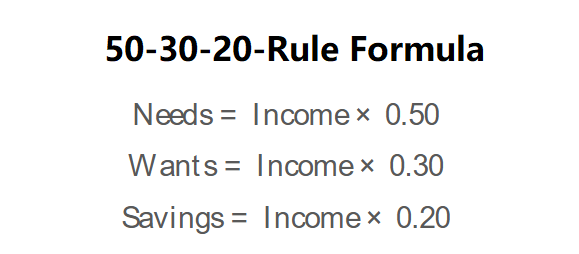 Home
Home
 Back
Back

Definition: The 50/30/20 Budget Calculator helps you allocate your after-tax income into three categories: 50% for needs, 30% for wants, and 20% for savings or debt repayment. It provides a simple framework for managing personal finances.
Purpose: This tool assists individuals in balancing essential expenses, discretionary spending, and financial goals, promoting better money management and long-term financial security.
The calculator uses the following formulas:
\( \text{Needs} = \text{Income} \times 0.50 \)
\( \text{Wants} = \text{Income} \times 0.30 \)
\( \text{Savings} = \text{Income} \times 0.20 \)
Where:
Steps:
Using the 50/30/20 rule is beneficial for:
Example 1: Calculate the budget for a monthly after-tax income of $4,000:
Example 2: Calculate the budget for a monthly after-tax income of $2,500:
Q: What is the 50/30/20 rule?
A: It’s a budgeting strategy that allocates 50% of after-tax income to needs, 30% to wants, and 20% to savings or debt repayment.
Q: Can I adjust the percentages?
A: Yes, the rule is flexible. You can adjust percentages based on your financial situation, such as increasing savings if debt repayment is a priority.
Q: What counts as needs vs. wants?
A: Needs include essentials like housing, utilities, and groceries. Wants include non-essentials like dining out, entertainment, and hobbies.